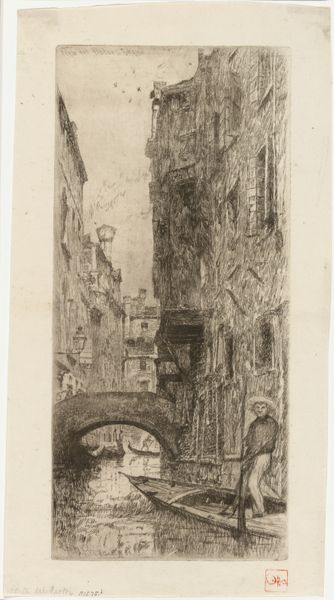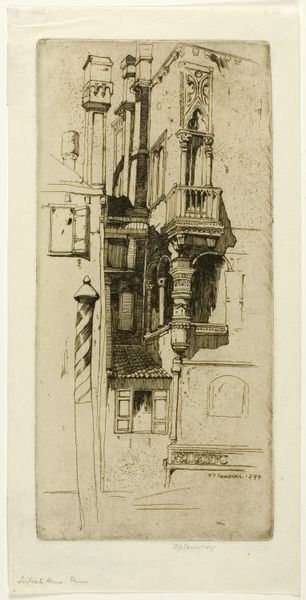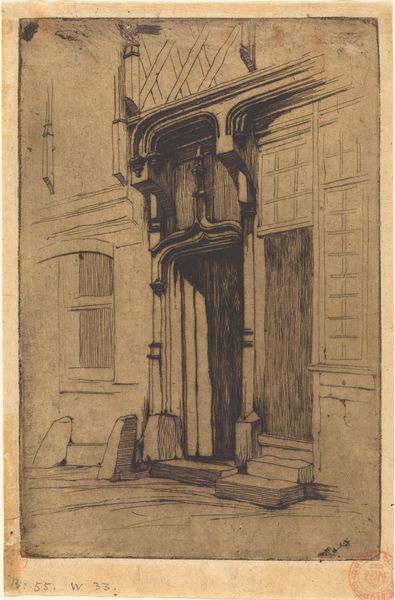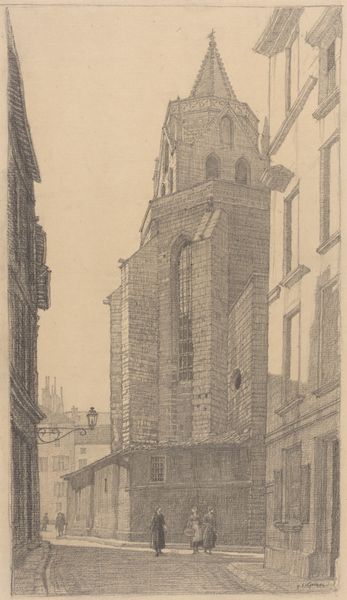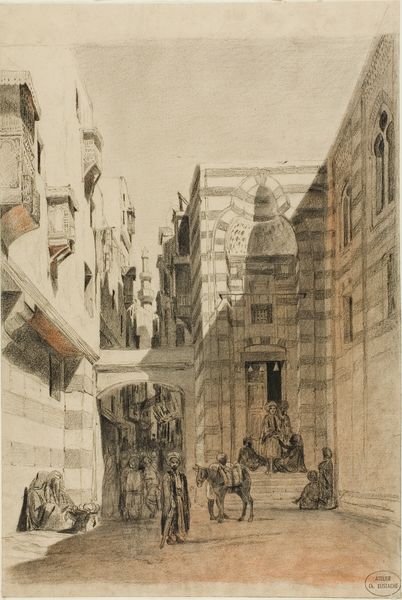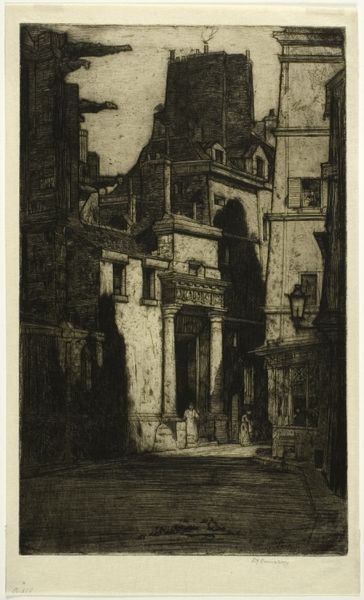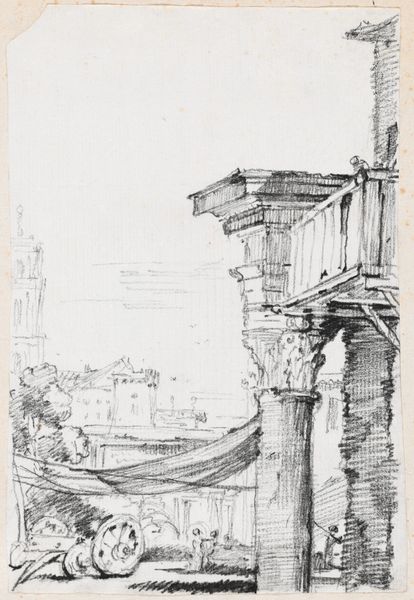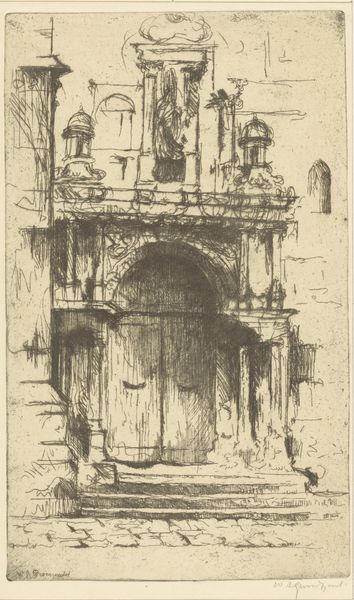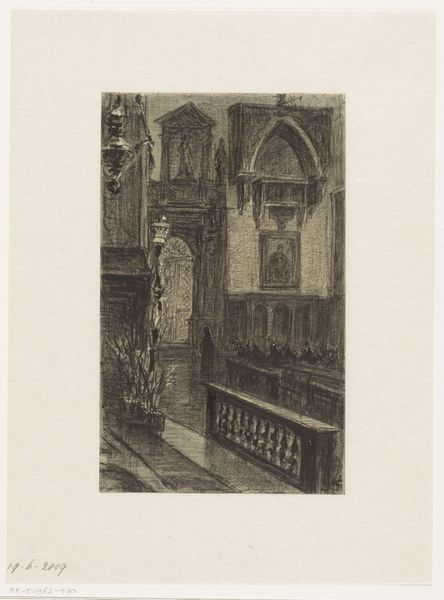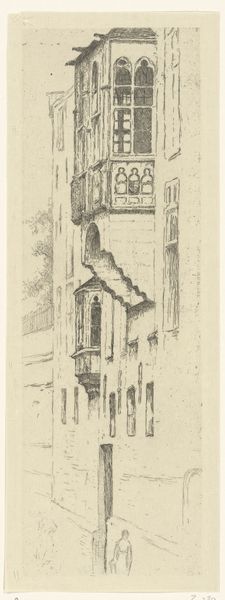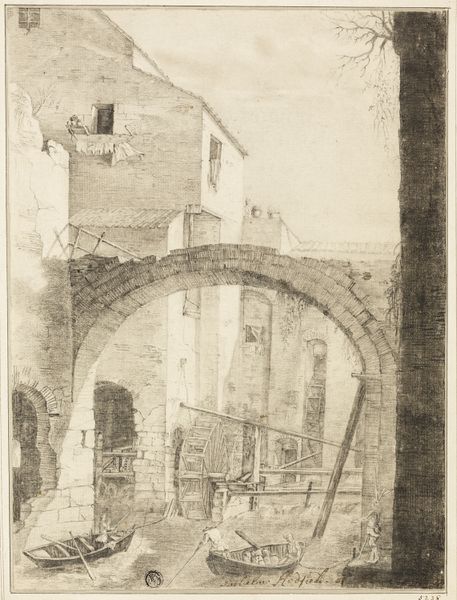
print, etching
# print
#
etching
#
cityscape
#
modernism
#
realism
Dimensions: plate: 19.05 x 9.84 cm (7 1/2 x 3 7/8 in.) sheet (approx.): 27.94 x 24.13 cm (11 x 9 1/2 in.)
Copyright: National Gallery of Art: CC0 1.0
Curator: This is John Taylor Arms’ “Porta Del Paradiso, Venezia,” created in 1930 using an etching technique. It depicts a captivating cityscape, revealing a corner of Venice steeped in architectural and historical depth. Editor: Wow, it's like stumbling upon a secret passage in time. The light and shadow feel almost… film noir. There's such a melancholic beauty to it. Is it just me, or can you practically smell the damp stone? Curator: That atmosphere is very much intended, I believe. Arms was deeply fascinated by the symbolic weight of architecture. He often chose subjects, like this Venetian scene, loaded with historical memory and cultural significance. The archway, that "Gate of Paradise," is, in itself, a profound symbol of transition and hope, even as the image's tone suggests something more somber. Editor: Right! The term "Gate of Paradise," especially against that intense darkness under the bridge, makes you think about those little everyday journeys into unknown psychological or emotional places. I imagine it can make you think about lost loves, perhaps? Or faded grandeur? It certainly echoes Venice’s own, perhaps romanticized, state of permanent near-ruin. Curator: Indeed. He used meticulous detail and realism in his Modernist prints, really highlighting a palpable sense of place while hinting at broader cultural anxieties during the interwar period. Editor: The amount of labor is just nuts. Like, the way the details of the stone and old windows pull you in... it makes you want to get lost inside. In fact, that high level of work feels almost like a meditation in itself – both for the viewer and the artist, no doubt. Curator: Precisely. His technical prowess invited viewers to contemplate not just the scene but also the larger context of history and cultural inheritance. "Porta Del Paradiso" stands as an example of how deeply we imbue these sites with human feeling. Editor: It truly makes one think of architecture as a kind of frozen music, holding all sorts of feelings and experiences captive. I'm feeling so many feelings! It will take a little time to work it all out... Curator: Ultimately, pieces such as "Porta Del Paradiso" serve as compelling reflections on enduring beauty coexisting with inescapable decline, presented to us as a powerful symbol of constant reinvention.
Comments
No comments
Be the first to comment and join the conversation on the ultimate creative platform.
